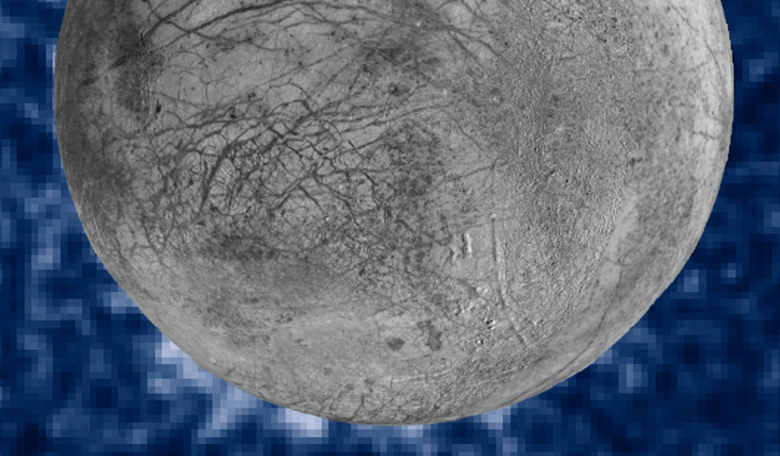Plumes estimated to rise about 200 kilometres (125 miles) high have been observed erupting from the surface of Europa by astronomers using NASA’s Hubble Space Telescope.
Researchers suspect that the high altitude plumes consist of water vapour, fed from a huge global ocean containing twice as much water as Earth's oceans. If this is the case, then the discovery bolsters the idea of being able to sample Europa's ocean without having to drill through miles of ice, should a future mission to the icy world get the go ahead.
"Europa's ocean is considered to be one of the most promising places that could potentially harbor life in the solar system," said Geoff Yoder, acting associate administrator for NASA's Science Mission Directorate in Washington. "These plumes, if they do indeed exist, may provide another way to sample Europa's subsurface."
The tantalising observations of finger-like projections from Europa’s surface was not the first feature the team behind the discovery intended to see. The team, led by William Sparks of the Space Telescope Science Institute in Baltimore, had originally planned to find out whether the enigmatic moon has a thin, extended atmosphere, or exosphere by observing Europa's limb as the moon passed in front of Jupiter.
"The atmosphere of an extrasolar planet blocks some of the starlight that is behind it," Sparks explained. "If there is a thin atmosphere around Europa, it has the potential to block some of the light of Jupiter, and we could see it as a silhouette. And so we were looking for absorption features around the limb of Europa as it transited the smooth face of Jupiter." But it turned out that after observing Europa for fifteen months it was potentially erupting plumes that the team saw on three separate occasions.
It is not the first time however that evidence for water plumes on Europa has been suggested. Six years ago, a team also using Hubble's Space Telescope Imaging Spectrograph instrument detected what was thought to be water vapour erupting from the south polar region of Europa and reaching more than 160 kilometres (100 miles) into space. Although both teams have used the same instrument to reach this conclusion, each used a totally independent method to get similar results.
"When we calculate in a completely different way the amount of material that would be needed to create these absorption features, it's pretty similar to what Roth and his team found," Sparks said. "The estimates for the mass are similar, the estimates for the height of the plumes are similar. The latitude of two of the plume candidates we see corresponds to their earlier work."
Although observations so far suggest that the plumes could be highly variable, meaning that they may erupt for some time and then die down in a sporadic manner, the results are not fully substantiated. If confirmed to the true, Europa would be the second moon in the solar system known to have water vapour plumes. The other is Saturn's moon Enceladus, which In 2005, was detected by NASA's Cassini orbiter to produce jets of water vapour and dust emanating from its surface.
Scientists will have to wait until 2018, when the James Webb Space Telescope is launched and infra red instruments on board can confirm (or deny) venting or plume activity on Europa.











